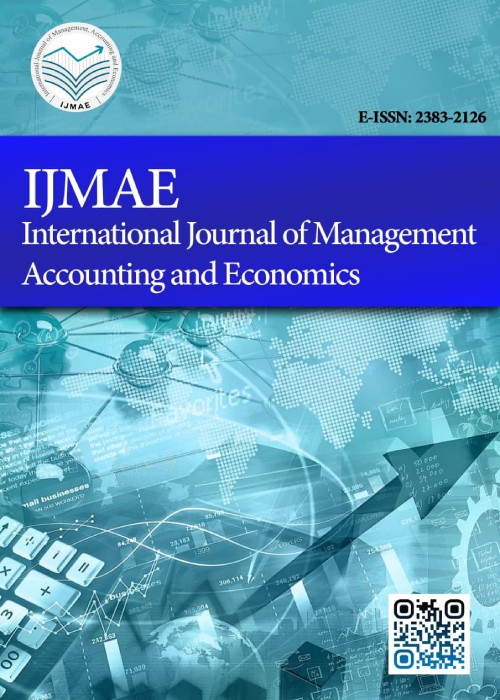فهرست مطالب
International Journal of Management, Accounting and Economics
Volume:7 Issue: 3, Mar 2020
- تاریخ انتشار: 1399/01/19
- تعداد عناوین: 4
-
Pages 123-133
This study examines the role of firm nature of business effect (financial vs. non-financial) in determining the lagged effect of economic factors on stock returns. Study applied generalized autoregressive conditional heteroskedasticity model GARCH (1, 1). The results of the study indicate that with the increase in lags from lag one to lag five, the significant impact of exchange rate on stock returns of financial firms becomes more and more negative while for the nonfinancial firms, it becomes more and more positive (from lag one to lag four). Results further indicated that the negative significant relation of risk free rate with stock returns of both financial and non-financial firms is maximized at one lag. However, the negative significant relation of inflation with stock returns of financial firms is maximized at lag two while in the case of non-financial firms, it is maximized at lag one. In this vein, it is also found that with the increase in lags from lag one to lag four, for both the financial and non-financial firms, the significant impact of inflation on stock returns shifts from negative to positive. Moreover, the statistically significant and positive influence of real activity on stock returns is maximized at one lag, while in the case of non-financial firms; it is maximized at two lags. Further, results also reported that the maximization of significant positive influence of money supply on stock returns exists at fifth lag for both financial and non-financial firms. In addition, the significant impact of money supply on stock returns becomes more and more positive with the increases in lags from lag one to lag five. Focusing on oil prices, the results further established that two lags is the most common lag for the statistically significant and positive impact of oil prices on stock returns; while, three lags is the most common lag for negative and significant impact of oil prices on stock returns. Finally, we reveal that macroeconomic indicators have lagged effect that varies with respect to firm nature of business, representing the role of nature of business effect.
Keywords: Lagged effect, economic exposure, Pakistani stock market andfirm nature of business effect -
Pages 150-164
This qualitative study examined Work-Life Balance (WLB) experiences of millennial married women workers in Bekasi area using a phenomenological study. Purposive Sampling techniques and semi-structured in-depth interview were used to gain depth into workers’ understandings of work-life balance experiences. This study analyzed responses from 10 millennial married women workers in Bekasi area. Findings of this study identified 9 themes from the respondents’ responses. Findings revealed that Focus, Time management and Communication and Company/Supervisor and Family Support themes have become dominant strategies for the respondents to manage their WLB and WLB conflict experience. These themes gleaned from this study are expected to be important and become a significant contribution to further research and practical knowledge for decision maker.
Keywords: Millennial, Work-life balance, Work-life conflict, Themes -
Pages 165-182
The main purpose of this study to investigate the impact of the bank rate, budget deficit, FDI and money supply M2 on inflation in the case of Pakistan applying the ARDL model using yearly data from 1974-2016. The Experimental evidence highlight that there is a unique and stable relationship among dependent variable inflation and other different explanatory variables, bank rate, budget deficit, Foreign investment, GDP, Exchange rate and trade openness. After analysis, the result of ARDL indicates that bank rate, exchange rate, and GDP have a negative impact on inflation in the long-run co-efficient. On the other hand, budget deficit, FDI, Money supply M2 and trade openness have a positive impact on inflation. These two tests CUSUM and CUSUMSQ shed light on validates and stability of coefficients in this approach.
Keywords: Inflation, Bank rate, Foreign investment, Budget Deficit, M2, GDP, Exchange Rate, Trade openness, ARDL -
Pages 167-172
This paper considers a mixed duopoly model in which a state-owned firm competes with a labor-managed firm. The timing of this game is as follows. In the first stage, each firm decides whether or not to hire a manager. In the second stage, the firms that hired managers select incentive parameters for them. In the third stage, firms compete in Cournot fashion. The paper presents the subgame perfect equilibrium of this model.
Keywords: Cournot model, managerial delegation, mixed duopoly, labormanaged firm, state-owned firm


